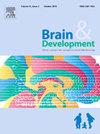Post-COVID-19 trends in pediatric meningitis in the PICU: A multicenter study
IF 1.3
4区 医学
Q4 CLINICAL NEUROLOGY
引用次数: 0
Abstract
Background
Meningitis is a severe and potentially life-threatening infection characterized by inflammation of the leptomeningeal membranes that protect the brain and spinal cord. This study aimed to evaluate the epidemiological and clinical features of pediatric patients with laboratory-confirmed meningitis admitted to pediatric intensive care units (PICUs).
Methods
This multicenter retrospective study included patients with laboratory-confirmed meningitis who were admitted to eight tertiary PICUs in Istanbul, Turkey, between January 1, 2023, and December 31, 2024.
Results
A total of 66 pediatric patients with laboratory-confirmed meningitis requiring intensive care were included. Of these, 39 (59 %) were diagnosed with bacterial meningitis and 27 (41 %) with viral meningitis. Among the bacterial meningitis cases, the most frequently identified pathogens were Streptococcus pneumoniae (41.0 %), Neisseria meningitidis (15.4 %), and Haemophilus influenzae (10.2 %). In the viral group, the most common pathogens were herpes simplex virus type 1 (25.9 %), enterovirus (22.2 %), and human herpesvirus 6 (22.2 %). The bacterial meningitis group had significantly higher white blood cell counts and C-reactive protein levels, and lower cerebrospinal fluid glucose levels compared with the viral meningitis group (p < 0.05). Signs of meningeal irritation and Pediatric Logistic Organ Dysfunction (PELOD) scores were also significantly higher in the bacterial meningitis group (p < 0.05). Age, sex distribution, PICU length of stay, presenting symptoms, rates of sequelae, and mortality did not differ significantly between the two groups. Intravenous immunoglobulin use was significantly more common in the viral meningitis group (p < 0.05).
Conclusions
Bacterial meningitis remains the leading cause of meningitis cases requiring pediatric intensive care. Continued public health efforts are essential to reduce mortality and prevent long-term sequelae associated with this serious condition.
covid -19后PICU儿童脑膜炎的趋势:一项多中心研究
背景:脑膜炎是一种严重且可能危及生命的感染,其特征是保护大脑和脊髓的轻脑膜膜的炎症。本研究旨在评估儿科重症监护病房(picu)收治的实验室确诊脑膜炎患儿的流行病学和临床特征。方法本多中心回顾性研究纳入2023年1月1日至2024年12月31日在土耳其伊斯坦布尔8个三级picu收治的实验室确诊脑膜炎患者。结果共纳入66例经实验室确诊需要重症监护的小儿脑膜炎患者。其中39例(59%)被诊断为细菌性脑膜炎,27例(41%)被诊断为病毒性脑膜炎。在细菌性脑膜炎病例中,最常见的病原体是肺炎链球菌(41.0%)、脑膜炎奈瑟菌(15.4%)和流感嗜血杆菌(10.2%)。在病毒组中,最常见的病原体是单纯疱疹病毒1型(25.9%)、肠道病毒(22.2%)和人类疱疹病毒6型(22.2%)。细菌性脑膜炎组白细胞计数和c反应蛋白水平显著高于病毒性脑膜炎组,脑脊液葡萄糖水平显著低于病毒性脑膜炎组(p <;0.05)。细菌性脑膜炎组的脑膜刺激症状和儿童后勤器官功能障碍(PELOD)评分也显著较高(p <;0.05)。年龄、性别分布、PICU住院时间、出现症状、后遗症率和死亡率在两组之间无显著差异。静脉注射免疫球蛋白在病毒性脑膜炎组中更为常见(p <;0.05)。结论细菌性脑膜炎仍然是需要儿童重症监护的脑膜炎病例的主要原因。持续的公共卫生努力对于降低死亡率和预防与这一严重疾病相关的长期后遗症至关重要。
本文章由计算机程序翻译,如有差异,请以英文原文为准。
求助全文
约1分钟内获得全文
求助全文
来源期刊

Brain & Development
医学-临床神经学
CiteScore
3.60
自引率
0.00%
发文量
153
审稿时长
50 days
期刊介绍:
Brain and Development (ISSN 0387-7604) is the Official Journal of the Japanese Society of Child Neurology, and is aimed to promote clinical child neurology and developmental neuroscience.
The journal is devoted to publishing Review Articles, Full Length Original Papers, Case Reports and Letters to the Editor in the field of Child Neurology and related sciences. Proceedings of meetings, and professional announcements will be published at the Editor''s discretion. Letters concerning articles published in Brain and Development and other relevant issues are also welcome.
 求助内容:
求助内容: 应助结果提醒方式:
应助结果提醒方式:


